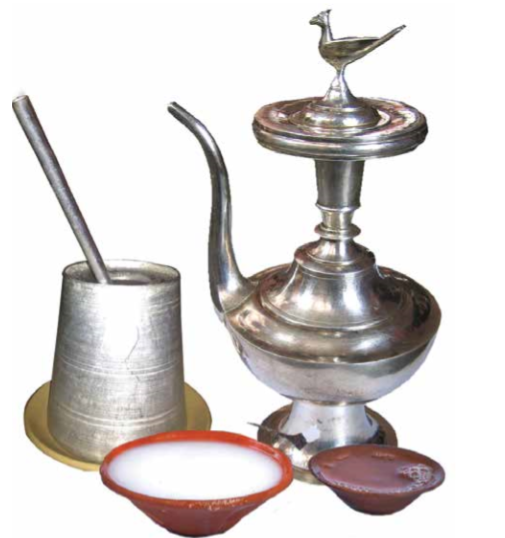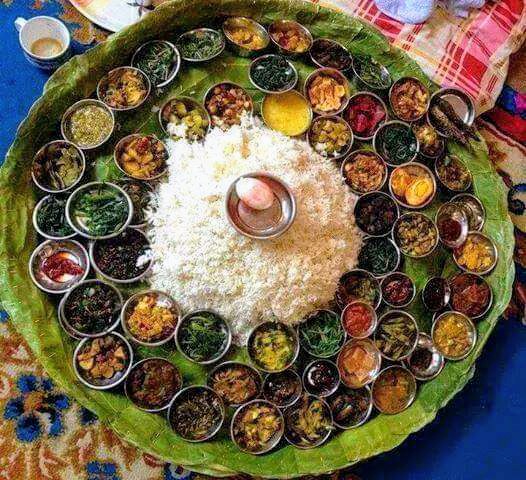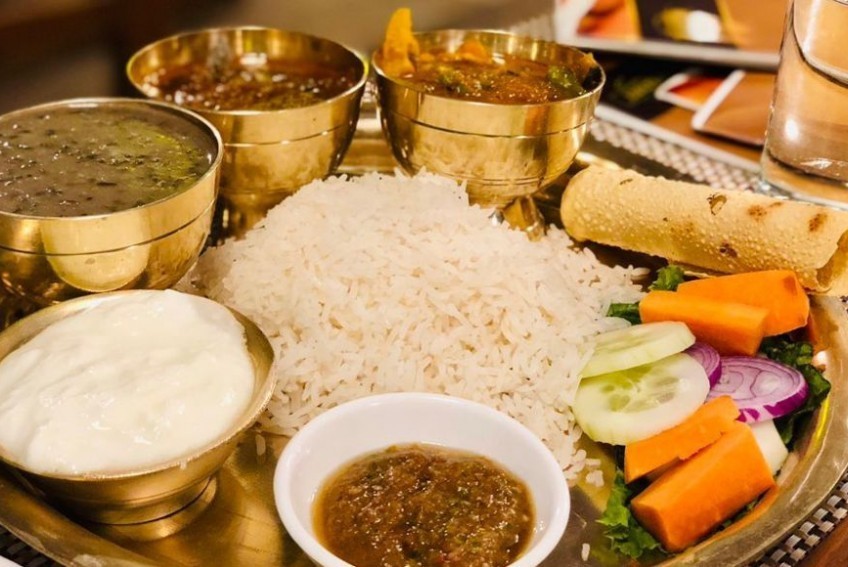Share this Article

Introduction
In the bustling alleys of Kathmandu Valley, where ancient temples stand beside modern cafes, the Newar community keeps alive a tradition as old as their civilization itself: the brewing of Thwon (rice beer) and Aila (distilled liquor). These beverages are not just drinks; they are threads woven into the fabric of Newari culture, marking celebrations, rituals, and everyday life. This article explores the history, making, cultural roles, and modern-day journey of Thwon and Aila, offering a taste of Nepal’s liquid heritage.
Historical Roots: Brewing Through the Ages
The Newars, Nepal’s indigenous inhabitants of the Kathmandu Valley, have a history spanning over 2,000 years. Their expertise in agriculture and craftsmanship extended to brewing, with Thwon and Aila becoming staples by the Malla dynasty (12th–18th century). Historical texts and oral histories suggest these drinks were part of royal feasts, temple offerings, and community festivals. The Malla kings, known for patronizing arts and culture, likely encouraged brewing traditions, linking them to both spirituality and social life (Shrestha, 2015).
Thwon, a mildly alcoholic rice beer, and Aila, its stronger distilled cousin, were crafted using methods passed down through generations. Their origins may trace back to ancient trade with Tibet and India, where fermented drinks held ritual importance. For Newars, these beverages became symbols of hospitality and unity, shared across caste and class.
Crafting Thwon and Aila: Art in a Jar
The preparation of Thwon and Aila is a labor of love, blending simplicity with skill.
Thwon: The Rice Beer
Ingredients:
Rice (usually red or white)
Marcha: A traditional starter made from crushed herbs, wheat, and rice.
Process:
Rice is soaked, steamed, and spread to cool.
Crushed marcha is mixed into the rice, which is then stored in clay pots.
Fermented for 3–5 days in warm temperatures.
Water is added, and the mixture is strained through bamboo sieves. The result is a cloudy, tangy-sweet beer with a low alcohol content.
Aila: The Firewater
Distillation:
Thwon is poured into a copper still (lan) and heated over a wood fire.
The vapor passes through a bamboo pipe, cooling into a clear, potent liquor (40–50% alcohol).
Often flavored with herbs, fruits, or spices for variety.
The tools—clay pots, bamboo sieves, and copper stills—have remained unchanged for centuries, reflecting sustainable practices. Women, often the brewers, play a key role in preserving these methods (Gellner, 2001).
Cultural Significance: More Than Just Drinks
Thwon and Aila are inseparable from Newari life, appearing in:
Festivals and Rituals:
Dashain: Families offer Thwon to deities and ancestors.
Indra Jatra: Aila is shared during processions honoring the rain god Indra.
Weddings: The groom’s family presents Aila to the bride’s relatives as a goodwill gesture.
Social Bonding:
Sharing a cup of Thwon breaks barriers, fostering unity in communities. During bhoj (feasts), elders sip Aila while discussing village matters.
Spiritual Connection:
In tantric rituals, Aila is offered to fierce deities like Bhairav. The act of drinking is seen as a bridge between humans and the divine.
Daily Life:
Farmers drink Thwon to refresh after fieldwork. It’s also a remedy for fatigue, believed to boost energy.
Modern Times: Tradition Meets Change
Urbanization and globalization have reshaped how Thwon and Aila are made and consumed:
Commercial Brewing:
Small-scale breweries in Kathmandu now sell bottled Thwon, catering to tourists and locals. Brands like Nepal Chhyang market it as a cultural product.
Legal Hurdles:
Nepal’s strict alcohol laws and taxes challenge home brewers. Many operate informally to avoid licenses, risking fines.
Youth Trends:
Younger Newars often prefer beer or whiskey. Yet, some embrace Thwon as a “heritage drink,” mixing it with juices for modern palates.
Tourism Boost:
Restaurants in Bhaktapur and Patan serve Aila in traditional karuwa (metal cups). Visitors enjoy it as part of cultural tours, boosting its global appeal.
Challenges: Preserving the Spirit
Despite their cultural value, Thwon and Aila face threats:
Lost Recipes: Mass-produced marcha and shortcuts dilute authentic flavors.
Aging Artisans: Few youth pursue brewing, seeing it as unprofitable.
Health Concerns: Misuse of Aila links it to alcoholism in some areas.
Preservation Efforts:
Workshops: NGOs teach brewing to women, empowering them economically.
Festivals: Events like Yomari Punhi include Thwon-tasting to educate youth.
Government Recognition: Nepal’s National Indigenous Federation advocates for legal protection of traditional brewing (UNESCO, 2018).
Conclusion: A Toast to Heritage
Thwon and Aila are more than drinks—they are liquid history, carrying the essence of Newari identity. Each sip tells a story of ancient kings, temple rituals, and village gatherings. As Nepal navigates modernity, these beverages remind us that traditions can adapt without losing their soul. For Newars, brewing is not just about alcohol; it’s about keeping their ancestors’ legacy alive, one cup at a time.
Categories:
Food & Drink
Tags:
Thwon and Aila
,
Liquid







